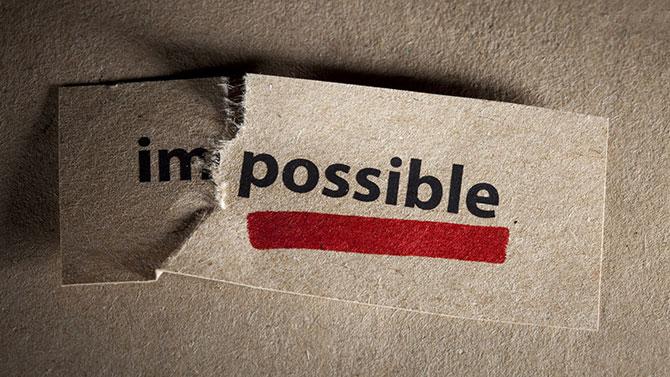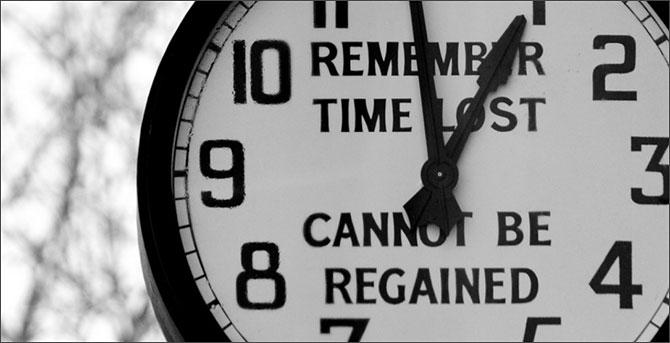Success Methodology: Setting a Smart Goal
Diary of an investor: "Think and grow rich"
Capitalist

Greetings! Have you noticed that tasks like "wash the dishes" or "run 5 km" usually do not meet with serious psychological resistance? But we perceive the goals of the format “be one of the first in sales” or “learn English” as something frightening and impossible. As a result, work on such "projects" is postponed indefinitely...
However, there are no unsolvable problems, so people came up with the technology of SMART goals. This method works equally effectively for large corporations and for yourself. So, goal setting is smart - what to look for and how to work with it?
English word " smart” translates as “quick, smart, smart, agile, dexterous.” Who invented the technology of setting “smart” goals? The author was an American economist, publicist and teacher Peter Drucker (back in 1954).

Peter Drucker has hundreds of articles in the Harvard Business Review and The Wall Street Journal and about 40 books. By the way, it was he who formulated the theory of the innovative economy in the new information society!
SMART is an abbreviation, where each letter indicates its own criterion for the effectiveness of the goal
S - Specific (Specific)
According to SMART, any goal you set must be specific. Even at the stage of setting the task, the result should be clearly defined according to the principle “one goal - one result”.
Let's take as an example the goal: increase in income.
- Wrong: "I want to earn more." I am sure you have already set yourself such a goal more than once. Unfortunately, it won't work.
- Right: "I want to increase my monthly income by 20%." Yes, much better. The goal has become specific, now you can unambiguously evaluate the final result.
Some American authors suggest checking the target for "specificity" using five Ws: What(what needs to be achieved) why(why do I need it), Who(who will help me in my work), Where(where the work will be done), Which(What are the requirements and limitations to be aware of).

Why is it important? The subconscious mind is an important assistant in the process of achieving the goal. But it is practically useless if you do not give it a clear and specific reference point (something like a bright picture). With that sorted out, let's move on.
M - Measurable
For any goal, it is important to establish clear criteria for evaluating the end result. Here are a couple of examples of such criteria in different areas of life.
- Appearance: waist and hips, weight, clothing size
- Business or job: number of clients or transactions, monthly income, bank account turnover
- Personal relationships: number of friends and acquaintances, number of dates per month, number of invitations (to the cinema, to a party, to a cafe)
Take another popular goal: weight loss
- Incorrect: "Look good" Tell me, how are you going to evaluate the outcome of such a goal? Is it realistic to evaluate it at all? How well did you start to look?
- Right: " Lose 10 kg" or " Lose weight from the 50th to the 46th size." So much better!
Why is it important? Without clear and specific indicators, we will not be able to determine (measure, if you will) whether the goal has been achieved.

A - Achievable
Any SMART goal must be achievable given all constraints: time, investment, knowledge and skills, people, access to resources and information. To be honest, this criterion is not so simple. The thing is that the concept of reachability is rather ephemeral, but statistics always come to my aid.
On average, people tend to overestimate their capabilities for the near future (up to 1 year) and underestimate their potential when planning longer-term goals (5 years or more).
Another cool example: writing a dissertation
- Incorrect: "Write a dissertation in three months." I do not presume to say with 100% certainty, but in my opinion the goal is not realistic
- Right: "Write a paper in three years." This task statement looks more down to earth and you can easily stay motivated throughout the entire journey to the intended results.
In addition, there are goals that are unattainable in principle. Let's say a 35-year-old woman can no longer become a professional ballerina from scratch. But she may well master Latin American dances.

Why is it important? Unattainable goals take a lot of time and energy and deprive you of self-confidence. At the same time, do not be afraid to dream and set yourself ambitious goals for longer periods (from 5 years)!
R - Relevant (Significant, relevant to others, relevant)
Criterion Relevant answers the question: “How will the achievement of the goal affect the solution of global problems”? The company (or you) must benefit from the achievement of any SMART goal. Otherwise, the goal is considered useless and upon reaching it, you will not be rewarded with the release of endorphins. ????
Task example: "Earn $1000 per month"
- Wrong goal: "Live in austerity." Think about whether you want to start earning more, but at the same time not be able to spend what you earn?
- Right goal: "Find three new sources of income." Another thing! Feel the difference?
Why is it important? Because if we scatter on goals that contradict each other (or have a weak effect), large-scale tasks will remain unresolved. And this cannot be allowed.
T - Time bound (Limited in time)
Each SMART goal has a fixed time frame. Time frames allow you to take control of the management process and overcome. Without them, the chances that the task will be done tend to zero.

I will give you a personal example of a goal: to learn English
- Incorrect: "I will be fluent in English." One day, in the next life ... well, then you yourself know.
- Right: “By March 1, 2017, I will be fluent in English.” That's it, now you have a deadline and you can't hide from it anywhere...
Why is it important? Because without a strict time limit, the solution of the problem is possible. Have you noticed that you are able to "lick" a huge apartment an hour before the arrival of guests? And spend the whole day on the same thing, if there is a lot of time ahead?
By the way, in terms of timing, SMART goals can be:
- Short term (1-3 months)
- Medium term (3-12 months)
- Long term (more than a year)
Examples of good SMART goals
And now it's time to combine all 5 principles and finally start setting the right goals. Here are a couple of examples:
- Raise the profitability of the Video of Thailand website to $300 per month by December 2017
- Obtain an "A" category driver's license by June 1, 2017
- Lose 10 kg of weight in three months by April 1, 2016
- Read 5 books by Robert Kiyosaki in six months by June 1, 2017 (with a summary of the main thoughts)
- Learn to swim in the brace style and by the end of winter (February 25) swim one kilometer non-stop
- Achieve a passive income of $100 per month by November 1, 2017
- Increase the number of members of the VKontakte group to 5000 people by the anniversary of the group on May 15
It is clear that any SMART goal must meet all five criteria. But there is another (almost secret!) indirect sign for checking the goal for “smartness”: the goal must be large-scale.

A good SMART goal should not be too simple or easy to achieve. “Run 300 m”, “Learn 50 new German words”, “Earn 10% more than now” is nonsense, not a global task. The right goal is always just above your limit! It also makes you want to get out of your comfort zone and try something new.
How easy is it to set SMART goals?
First step. Accept the challenge
You need to clearly understand that the achievement of the future goal is necessary, first of all, for you. We all love to complain about circumstances and make excuses for ourselves. But you and only you are responsible for success or failure! This is perhaps the most important point in goal setting (and not only...)!
Second step. Realize the importance
Explain to yourself the importance of the future goal. It should not be a momentary whim or spontaneous desire. Do you want to / speak Italian fluently / open a coffee shop? Then think over to the smallest detail how your life will change after that.
Third step. Get support
As a rule, support from the outside at times accelerates the achievement of the goal. Other people can control you, motivate you, or take on some of the tasks. It's great if the end result affects not only you, but also people important to you.

Fourth step. Break down the goal into smaller tasks
Sometimes even the most specific goal seems so ambitious that it scares and makes you give up even at the start. The subconscious mind can be tricked by breaking down a “big” goal into smaller tasks. Not "lose 20 kg in a year," but "lose 2 kg per month for a year." It is important that each intermediate result brings one more step closer to the desired result.
Have you ever used SMART goals? Subscribe to updates and share links to fresh posts with friends on social networks!
P.S. Having started to apply this technique, at first you may notice that it is as if the whole world has turned against you! Your best friends or even your parents may start telling you that it's impossible and not even worth trying. Someone will even give an example that he has already tried to do this, but he did not succeed.
The only advice I can give you is not to give up. Grit your teeth, ignore the negativity and keep moving forward. Imagine that you are a locomotive picking up speed and nothing can stop you on the way to your goal. Believe me, the result will exceed all your expectations! Good luck!
P.S.S. By the way, I prefer to set new goals along with summing up the results of the previous year. And then I share my results in achieving them online. This additionally motivates me and I achieve them even ahead of schedule. If interested, read about them.





